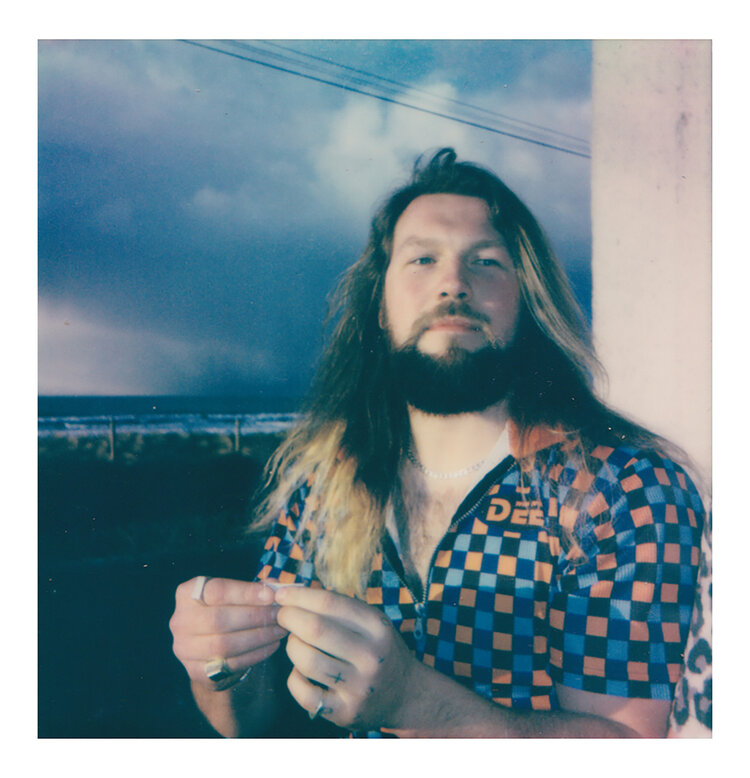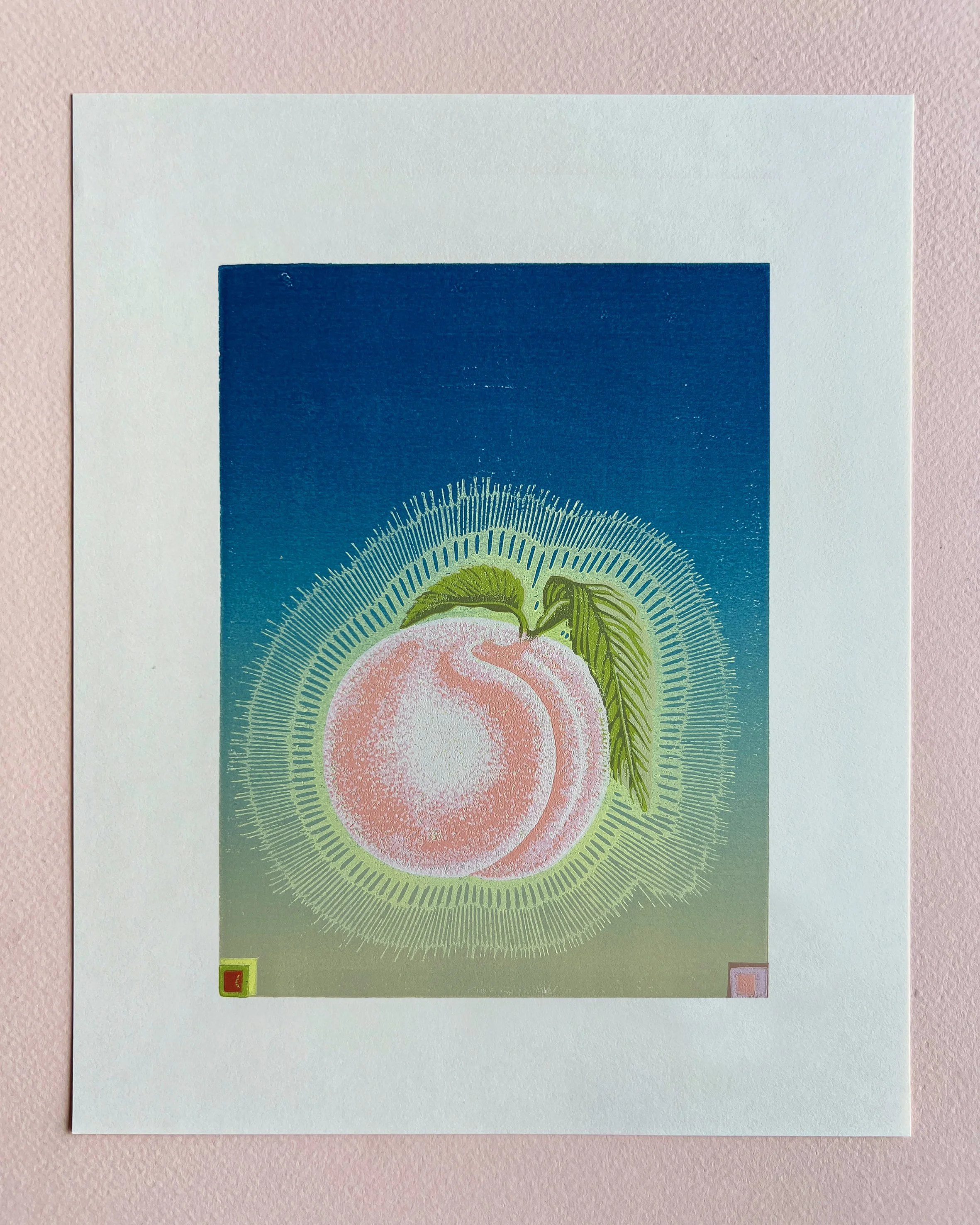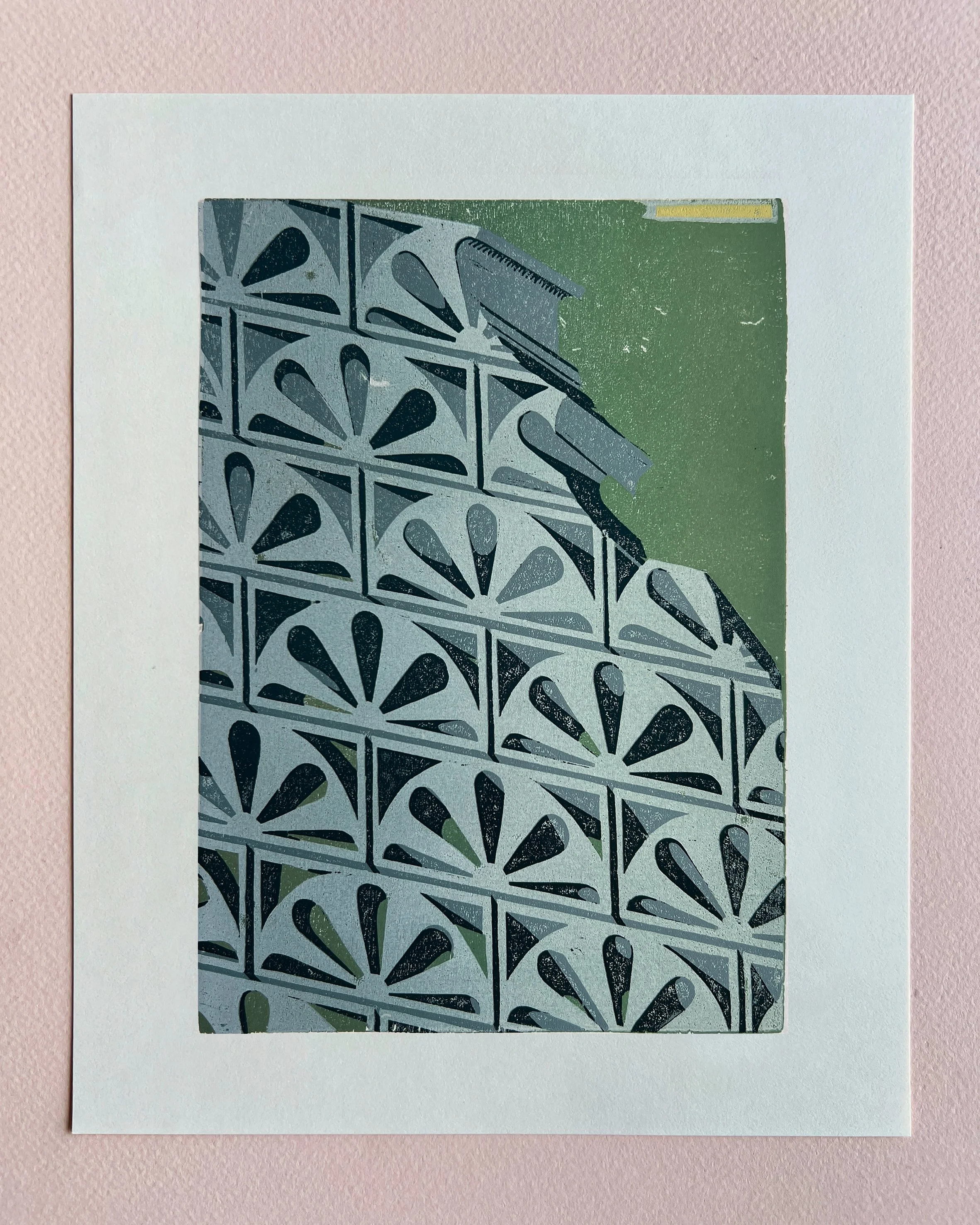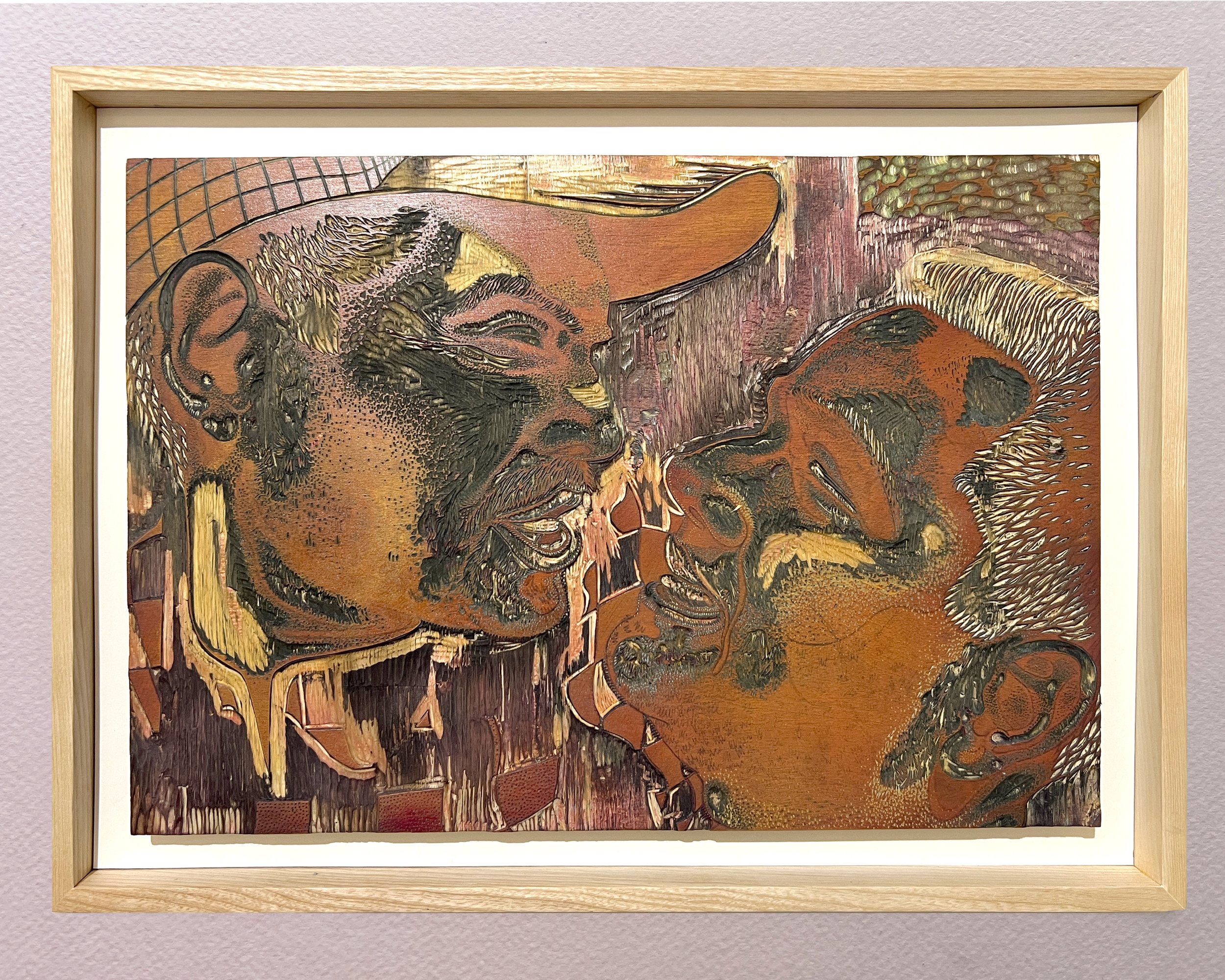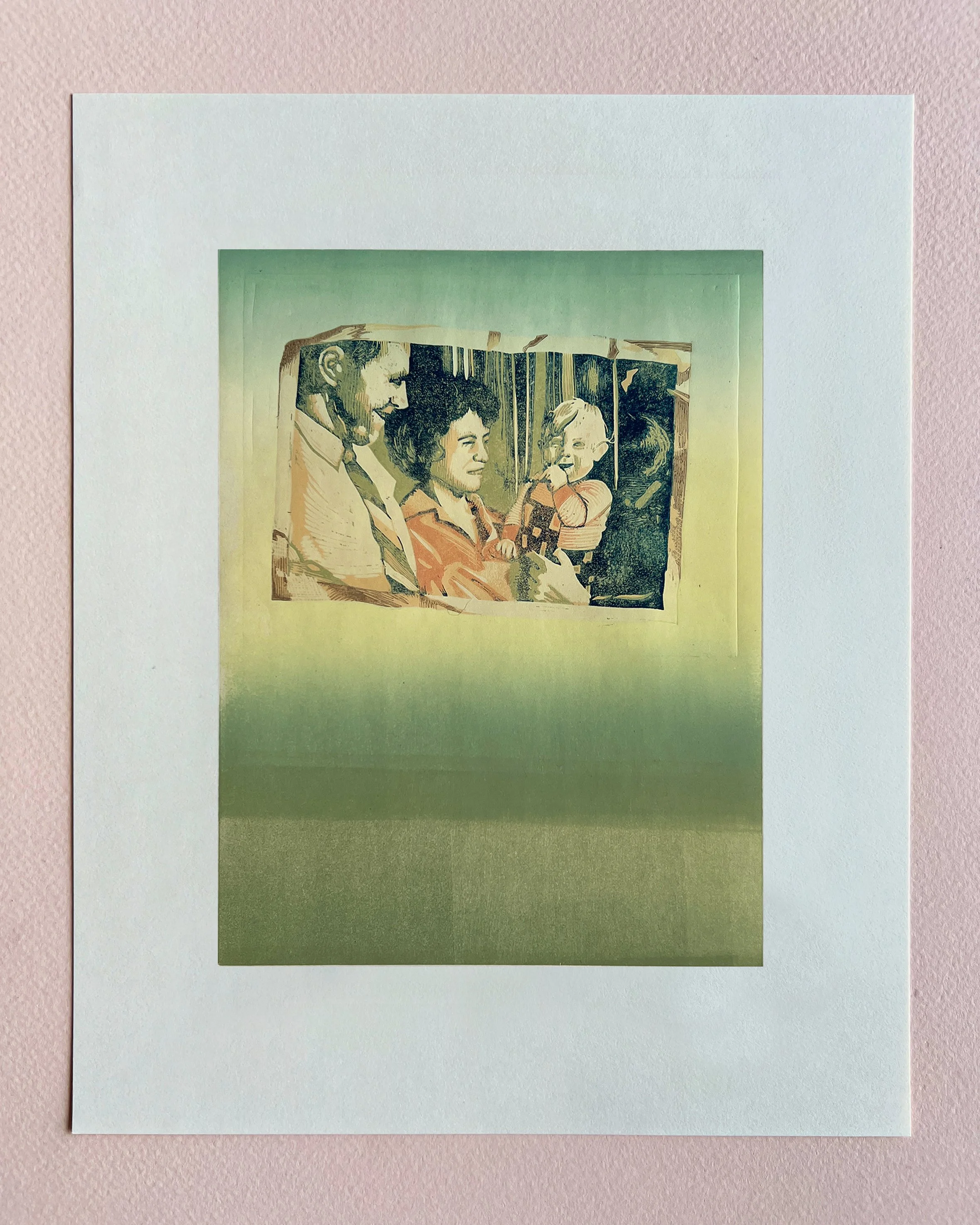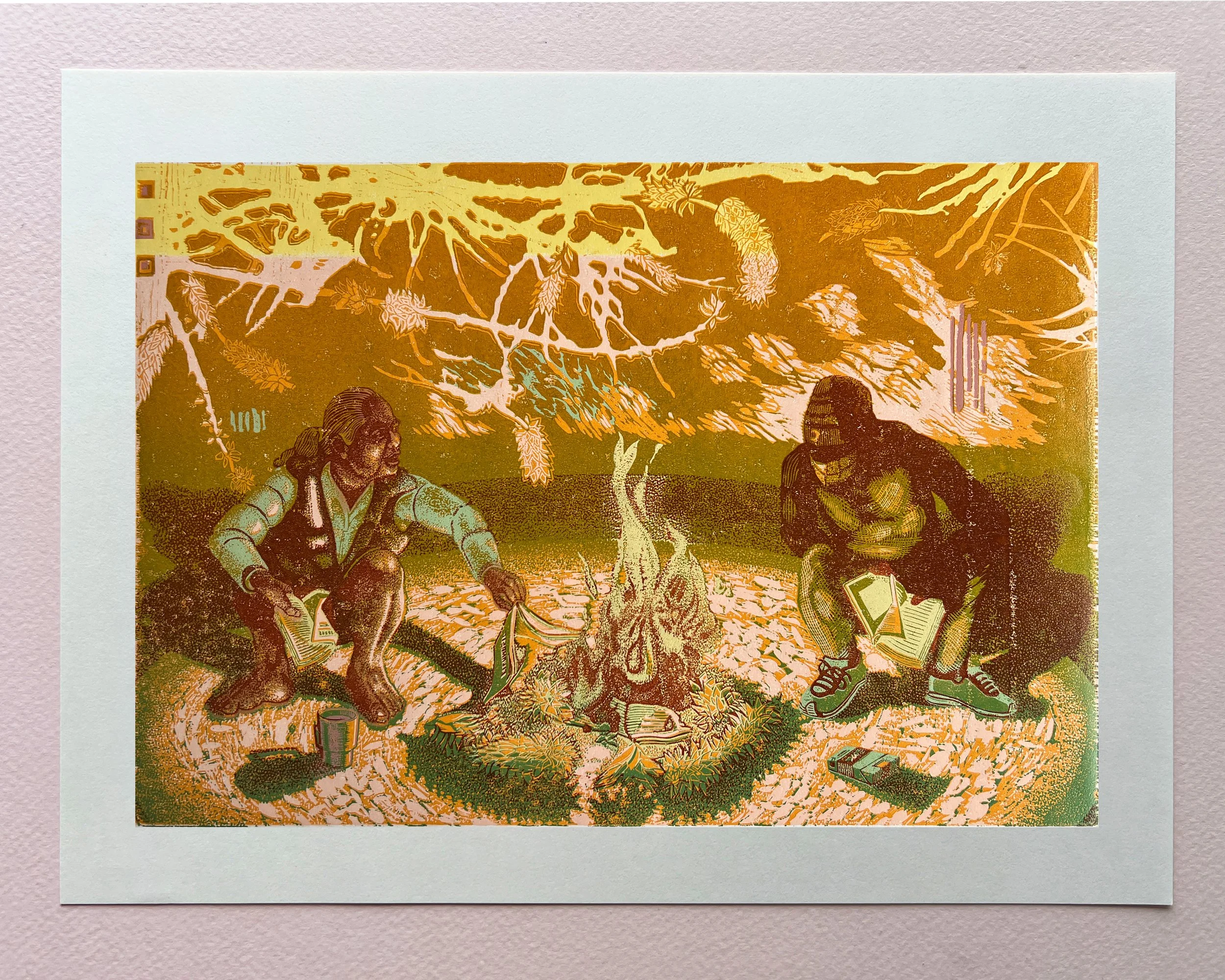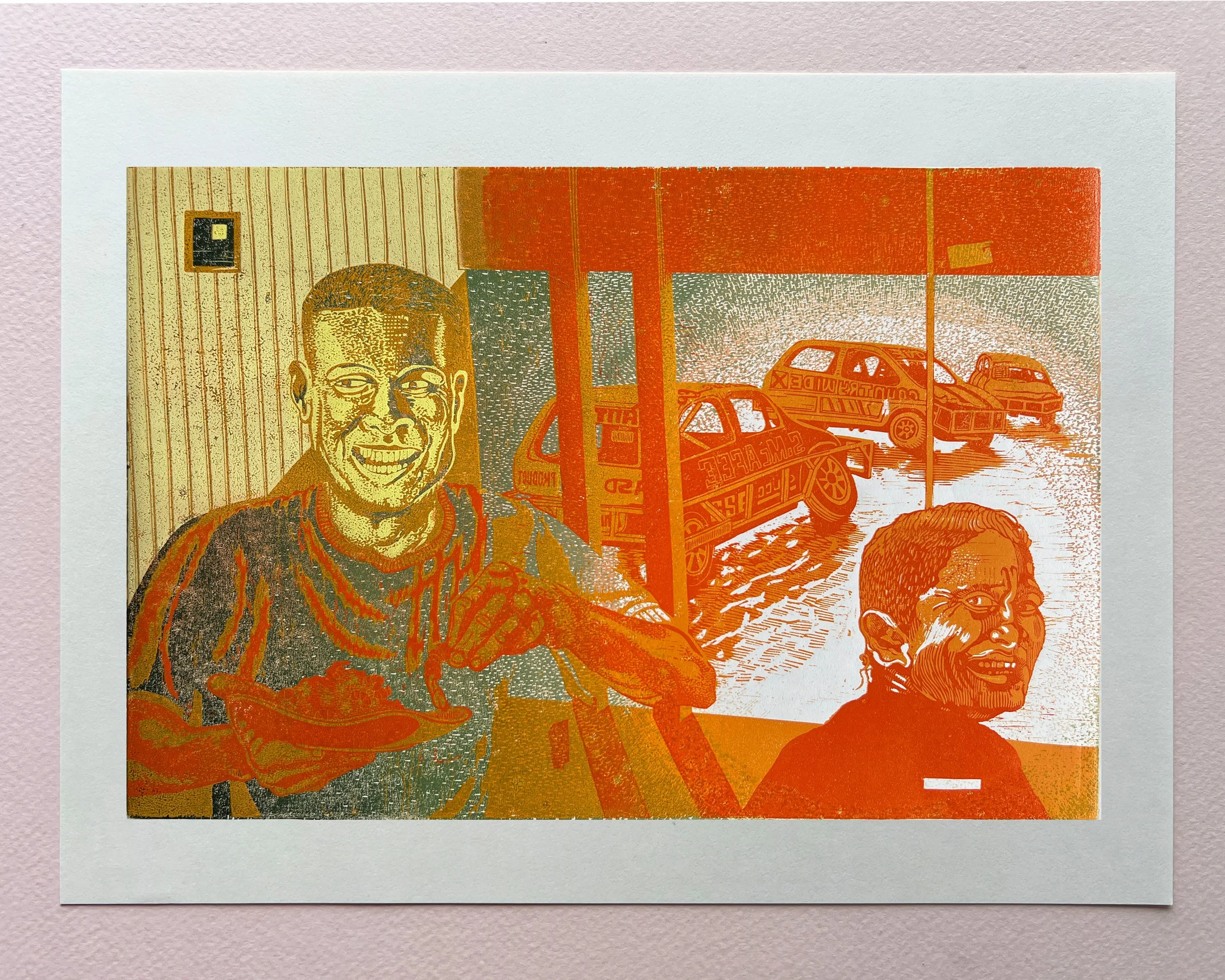Peachy
Reduction woodcut
26cm x 21cm
Beyond the grate
Reduction woodcut
Unframed: 24cm x 32cm
Framed: 33cm x 45cm
2025
Saigon bricks
Reduction woodcut
Unframed: 24cm x 32cm
Framed: 33cm x 45cm
2025
Inside the cage looking out
Reduction woodcut
Unframed: 24cm x 32cm
Framed: 33cm x 45cm
2025
Under the monkey puzzle trees
carved woodblock
2025
framed: 60cm x 44cm
I miss everyone i have ever met (block)
carved woodblock
2025
framed: 60cm x 44cm
Demon dogs (pink)
Reduction woodcut
2025
Unframed: 57cm x 41cm
Framed: 60cm x 44cm
Archive
Reduction woodcut
2025
Unframed: 36cm x 28.5cm
Framed: 46cm x 39cm
Joseph Albers
Reduction woodcut
2025
Unframed: 21cm x 29.7cm
Framed: 23cm x 32cm
Glanced
Reduction woodcut
2025
Unframed: 32cm x 25cm
Framed: 35cm x 27cm
scattered Broken Maybe (publication)
21cm x 14.5 cm
Hand bound unique books containing an asortment of short texts written or revisited while creating “Scattered Broken Maybe’ series.
edition 1/30
Demon dogs
Reduction woodcut
2025
Unframed: 57cm x 41cm
Framed: 60cm x 44cm
I miss everyone I have ever met
Reduction woodcut
2025
Unframed: 57cm x 41cm
Framed: 60cm x 44cm
I miss everyone I have ever met (inverted)
Reduction woodcut
2025
Unframed: 57cm x 41cm
Framed: 60cm x 44cm
Under the monkey puzzel trees
Reduction woodcut
2025
Unframed: 57cm x 41cm
Framed: 60cm x 44cm
Luckless
Reduction woodcut
2025
Unframed: 57cm x 41cm
Framed: 60cm x 44cm
Destruction derby
Reduction woodcut
2025
Unframed: 57cm x 41cm
Framed: 60cm x 44cm
Desert of the mind
Reduction woodcut
2025
Unframed: 57cm x 41cm
Framed: 60cm x 44cm
The sky is a mirror
Reduction woodcut
2025
Unframed: 57cm x 41cm
Framed: 60cm x 44cm
Hot Tarmac
Reduction woodcut
2025
Unframed: 19cm x 24.5cm
Framed: 24cm x 31cm
